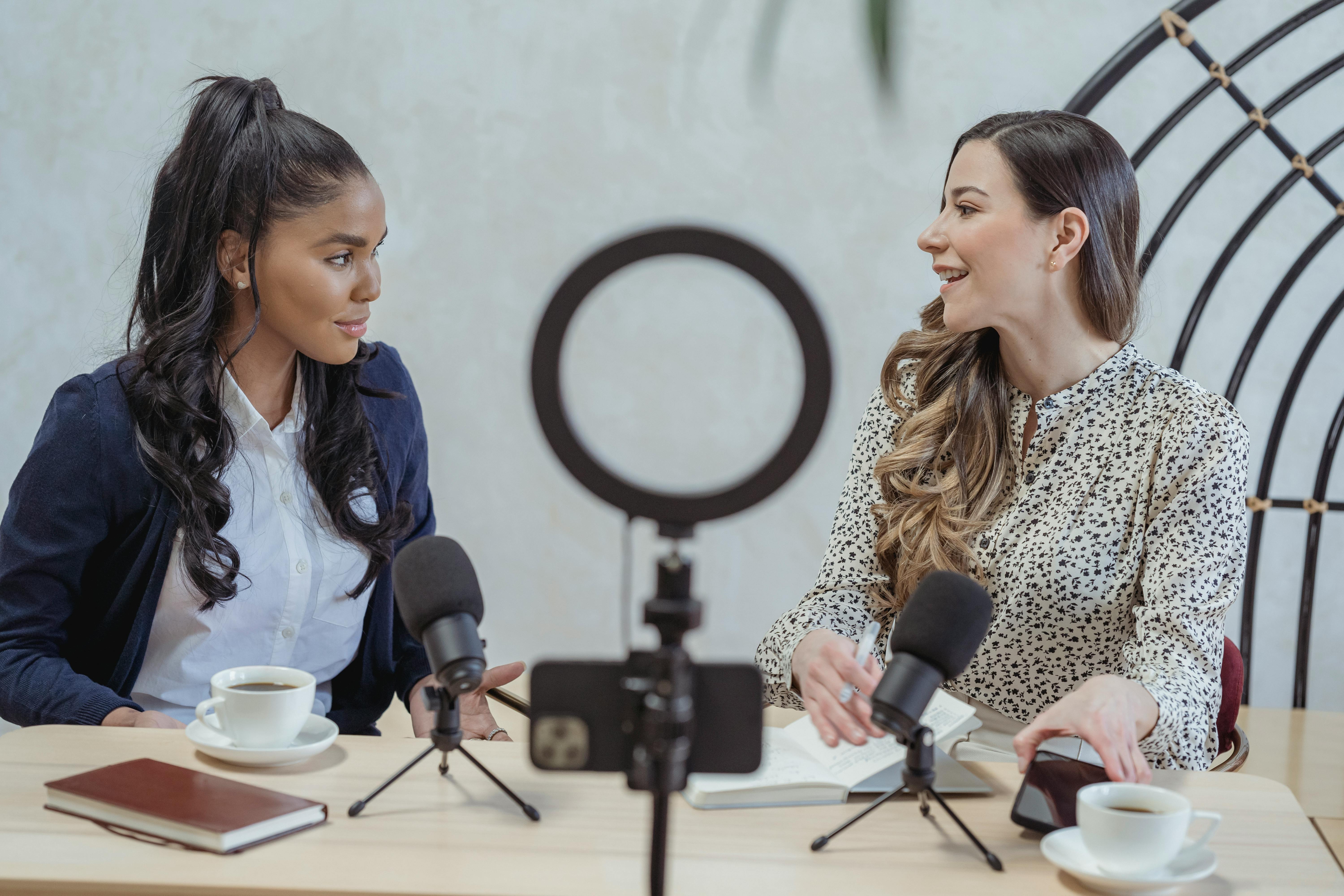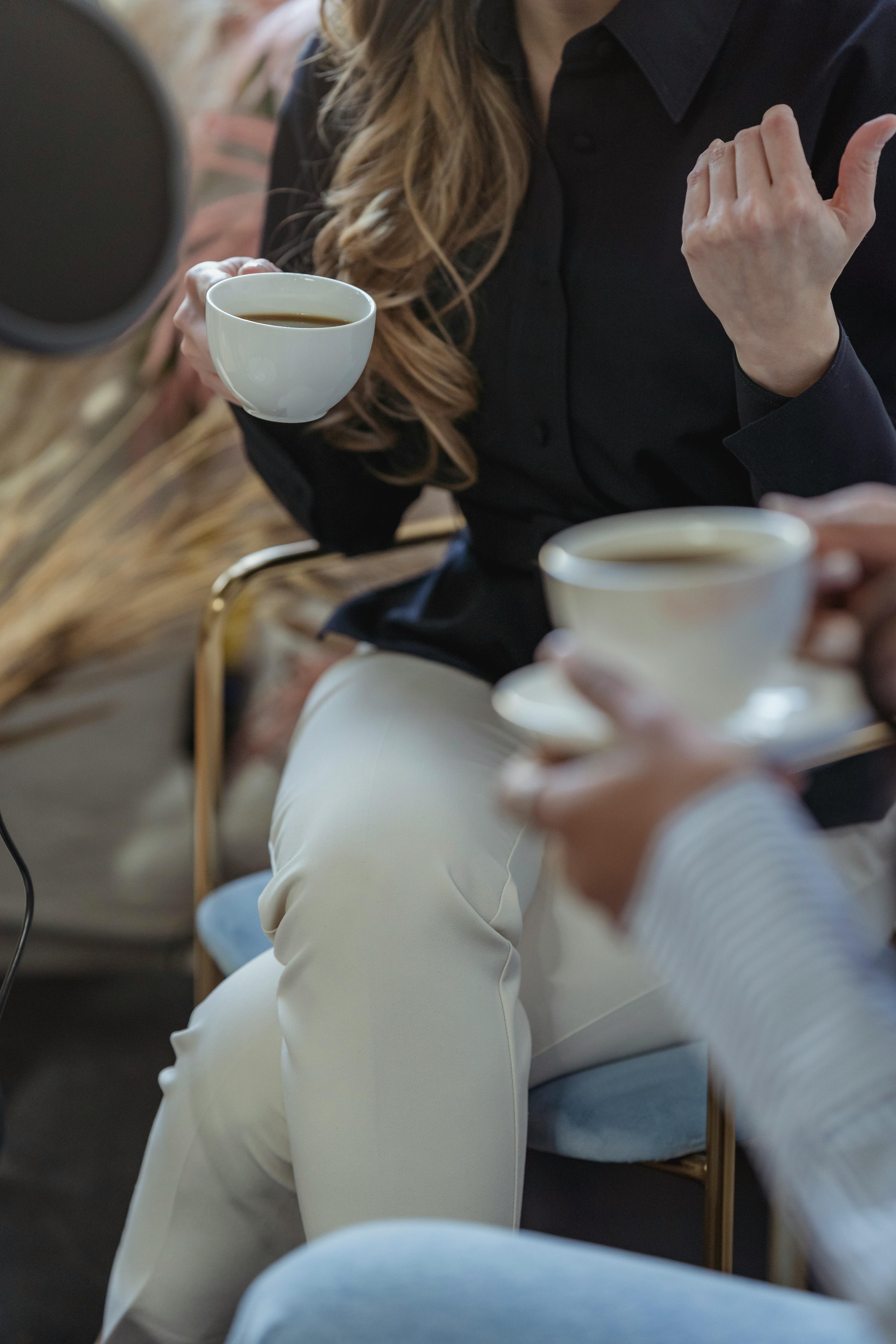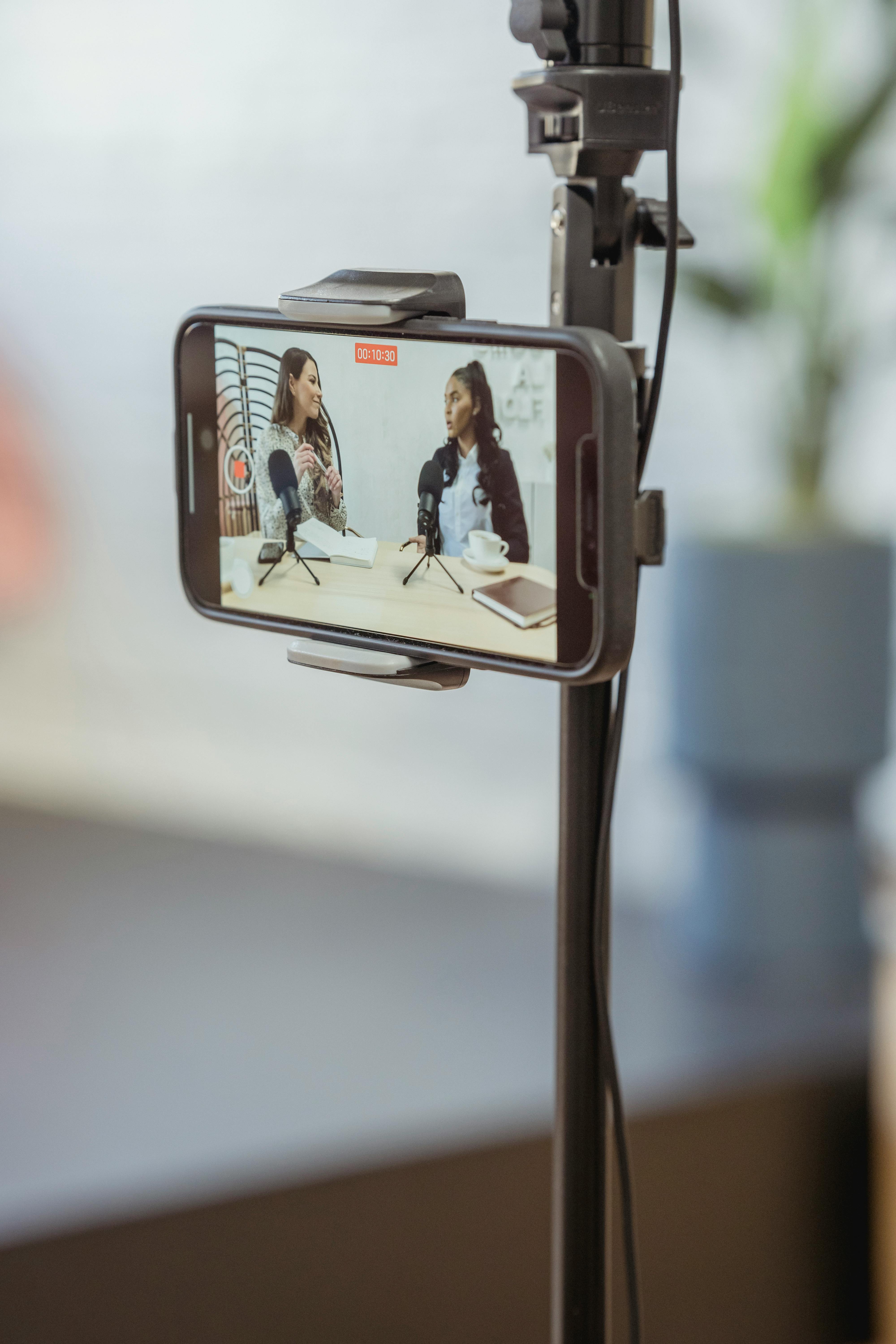Looking to start your very own podcast? The key to creating high-quality audio lies in choosing the right microphone. In this article, we will guide you through the world of podcasting equipment and show you some recommended brands for microphones, headphones, audio interfaces, pop filters, boom arms/stands, shock mounts, acoustic treatment, recording software, portable recorders, and cables/accessories. With the right equipment, you’ll be able to capture professional-grade audio that will keep your listeners engaged and coming back for more. So, let’s dive into the world of microphones for podcasts and uncover how to capture that crystal-clear sound you’ve been dreaming of.
1. Choosing the Right Microphone
When it comes to podcasting, choosing the right microphone is crucial for capturing high-quality audio. There are several types of microphones to consider, each with its own unique characteristics and uses. Let’s explore the different options available:
1.1 Dynamic Microphones
Dynamic microphones are known for their durability and versatility. They are great for podcasters who may be recording in various locations or environments. These microphones are able to handle high sound pressure levels, making them ideal for capturing loud voices or instruments.
1.2 Condenser Microphones
Condenser microphones are more sensitive and responsive compared to dynamic microphones. They excel at capturing subtle details and nuances in vocals, making them a popular choice for podcasters who prioritize clarity and fidelity. However, they are more delicate and require a power source, such as phantom power, to operate.
1.3 Ribbon Microphones
Ribbon microphones offer a vintage and warm sound quality. They are known for their smooth frequency response and natural sound reproduction. These microphones are often used in professional studios and are well-suited for capturing vocals and instruments with a rich tonal character.
1.4 Lavalier Microphones
Lavalier microphones, also known as lapel microphones, are small and discreet. They are typically attached to clothing and offer hands-free operation, making them a popular choice for podcasters who are constantly on the move or conducting interviews. Lavalier microphones are commonly used in broadcast and presentation settings.
1.5 USB Microphones
USB microphones are a convenient option for podcasters who want a simple plug-and-play setup. These microphones connect directly to your computer via USB, eliminating the need for an audio interface or external power source. USB microphones come in various types, including dynamic and condenser options, offering versatility and ease of use.
2. Understanding Polar Patterns
Polar patterns describe how microphones pick up sound from different directions. Understanding polar patterns is essential for achieving the desired sound capture and minimizing unwanted noise. Let’s explore some common polar patterns:
2.1 Cardioid Polar Pattern
The cardioid polar pattern is heart-shaped and captures sound primarily from the front of the microphone while rejecting sound from the sides and rear. This pattern is ideal for solo podcasters, as it helps isolate the desired sound source and minimizes background noise.
2.2 Omnidirectional Polar Pattern
The omnidirectional polar pattern captures sound equally from all directions. It is well-suited for recording group discussions or capturing ambient sound. However, be mindful of the potential for picking up unwanted background noise.
2.3 Bi-Directional (Figure-8) Polar Pattern
The bi-directional polar pattern captures sound from the front and rear of the microphone, while rejecting sound from the sides. This pattern is commonly used for interviews or podcast episodes featuring two hosts facing each other. It allows for clear recording of both voices while minimizing side conversations.
2.4 Hypercardioid and Supercardioid Polar Patterns
Hypercardioid and supercardioid polar patterns are similar to the cardioid pattern but have a narrower pickup angle. These patterns offer even greater isolation of the desired sound source and are useful for reducing off-axis noise. They are commonly used in professional broadcasting and studio environments.

3. Essential Features to Consider
When choosing a microphone for podcasting, there are several essential features to consider. These features can greatly impact the overall sound quality and user experience. Let’s take a closer look at each one:
3.1 Frequency Response
Frequency response refers to the range of frequencies a microphone can accurately reproduce. It is typically measured in Hertz (Hz) and displayed as a graph. Look for a microphone with a wide frequency response range to ensure it can capture the full range of human vocals.
3.2 Sensitivity
Sensitivity refers to how well a microphone converts sound waves into an electrical signal. A more sensitive microphone will require less input sound pressure to produce a strong signal. Consider the environment in which you’ll be recording and choose a microphone with an appropriate sensitivity level.
3.3 Signal-to-Noise Ratio
The signal-to-noise ratio (SNR) measures the level of desired sound relative to background noise. A higher SNR indicates a cleaner and quieter signal. When selecting a microphone, aim for a high SNR to ensure optimal sound quality and minimal noise interference.
3.4 Impedance
Impedance is the resistance to electrical current flow in a microphone. Matching the impedance of your microphone to that of your audio equipment can help prevent signal loss and ensure optimal performance. Most modern microphones have a standard impedance level of around 150 ohms.
3.5 Pop/Wind Filters
Pop filters, also known as wind screens, are used to reduce plosive sounds and protect the microphone from excessive wind noise. They are commonly used in vocal recording to eliminate unwanted popping sounds caused by the rapid movement of air when pronouncing certain syllables.
3.6 Shock Mounts
Shock mounts are designed to isolate the microphone from handling noise and vibrations. They help prevent unwanted rumbling sounds caused by the microphone picking up vibrations from the surface it’s mounted on or from the user’s actions. Using a shock mount can greatly improve the overall sound quality of your recordings.
3.7 Boom Arms/Stands
Boom arms or microphone stands are essential for positioning your microphone properly and providing stability during recording sessions. Look for boom arms or stands that are adjustable, sturdy, and compatible with your microphone. This will help you find the perfect placement and prevent any unnecessary movement or noise.
3.8 XLR vs. USB Connection
Consider whether you prefer an XLR or USB connection for your microphone. XLR connections are commonly used in professional setups and offer a balanced signal and superior audio quality. USB microphones, on the other hand, provide a more straightforward plug-and-play solution and are suitable for beginners or those who prioritize convenience.
4. Recommended Microphone Brands
When it comes to podcasting equipment, there are several trusted brands known for their high-quality microphones. Here are a few recommended microphone brands:
4.1 Shure
Shure is a well-respected brand in the audio industry, known for its reliable and durable microphones. They offer a wide range of microphones suitable for podcasting, from dynamic options like the Shure SM58 to condenser options like the Shure SM7B. Shure microphones are widely used by professionals and beginners alike.
4.2 Rode
Rode is a popular choice among podcasters for its versatile and budget-friendly microphones. They offer a range of options, including dynamic and condenser microphones. The Rode NT1 and Rode PodMic are highly regarded for their exceptional sound quality and value for money.
4.3 Audio-Technica
Audio-Technica is renowned for its wide range of microphones catering to different needs and budgets. From the budget-friendly Audio-Technica ATR2100x-USB to the professional-grade Audio-Technica AT2020, they provide a variety of options suitable for podcasting. Audio-Technica microphones are known for their reliability and high-quality sound capture.

5. Microphone Accessories
To optimize your podcasting setup, it’s important to consider various microphone accessories. These accessories can improve the overall sound quality and provide added convenience. Here are a few essential microphone accessories to consider:
5.1 Pop Filters
Pop filters, also known as pop screens or wind screens, are thin mesh-like filters that are placed in front of the microphone to reduce plosive sounds caused by certain syllables. They act as a barrier between the microphone and the vocalist, preventing the sudden rush of air from distorting the sound. Pop filters are essential for achieving clean and clear recordings.
5.2 Boom Arms/Stands
Boom arms or microphone stands are used to securely hold the microphone at the desired position. They provide stability and flexibility during recording sessions, allowing you to adjust the microphone’s height and angle easily. Look for boom arms or stands that are sturdy and adjustable to suit your recording setup.
5.3 Shock Mounts
Shock mounts are crucial for isolating the microphone from handling noise and vibrations. They help minimize unwanted rumbling sounds and ensure a clean audio signal. Choose a shock mount that is compatible with your microphone and provides a secure and stable mounting solution.
5.4 Cables and Accessories
Don’t forget to consider the necessary cables and accessories for connecting your microphone to your recording equipment. XLR cables are commonly used for professional setups, while USB cables are more suitable for USB microphones. Additionally, consider investing in cable management solutions, such as cable clips or cable ties, to keep your setup tidy and organized.
6. Room Acoustics and Acoustic Treatment
The acoustics of your recording space play a significant role in the sound quality of your podcast. Proper room acoustics and acoustic treatment can help minimize unwanted reflections and reverberations, resulting in cleaner and more professional-sounding recordings. Let’s explore some key aspects of room acoustics and recommended acoustic treatment:
6.1 Importance of Room Acoustics
Room acoustics refers to how sound behaves in a given space. The size, shape, and materials of your recording room can significantly impact the overall sound quality. Avoid small, reflective spaces as they can cause excessive echo and reverb. Instead, opt for larger, quieter rooms with acoustic treatment to achieve optimal sound recording conditions.
6.2 Types of Acoustic Treatment
Acoustic treatment involves using various materials and techniques to control sound reflections and reverberation in a room. Some common types of acoustic treatment include:
- Bass traps: These absorb low-frequency sound waves, reducing the buildup of low-end energy in the room.
- Absorption panels: These absorb mid and high-frequency sound waves, minimizing reflections and echo.
- Diffusers: These scatter sound waves, helping to create a more balanced and natural acoustic environment.
6.3 Recommended Acoustic Treatment Brands
There are several trusted brands that specialize in acoustic treatment products. Consider these recommended brands for your acoustic treatment needs:
- Auralex: Auralex offers a range of high-quality acoustic foam panels, bass traps, and diffusers. They are a well-known brand in the industry and provide effective solutions for improving room acoustics.
- Primacoustic: Primacoustic specializes in innovative acoustic treatment products, including panels, diffusers, and bass traps. They offer various solutions to suit different room sizes and configurations.
- ATS Acoustics: ATS Acoustics provides a wide range of acoustic products, including panels, bass traps, and diffusers. They are known for their quality craftsmanship and affordable pricing.

7. Setting Up Your Microphone for Podcasting
Now that you have chosen the right microphone and considered various accessories, it’s time to set up your microphone for podcasting. Proper setup is crucial for achieving optimal sound quality. Let’s explore some important considerations:
7.1 Choosing a Recording Space
Selecting the right recording space is essential for obtaining clean and clear audio. Look for a quiet area with minimal background noise, such as a spare room or a dedicated space in your home. Avoid rooms with excessive echo or reverberation. If necessary, consider using blankets or curtains to help absorb sound and minimize reflections.
7.2 Proper Microphone Placement
Proper microphone placement is crucial for capturing high-quality sound. Position the microphone at a comfortable speaking distance, typically around 6 to 12 inches from your mouth. Experiment with placement to find the sweet spot that offers the best balance between capturing your voice and minimizing background noise.
7.3 Adjusting Input Levels
Adjusting the input levels on your recording device or audio interface is important for avoiding distortion or clipping. Start by setting the input level low and gradually increase it while speaking or recording. Pay attention to the audio levels on your recording software or hardware meters, ensuring they consistently stay within the optimal range.
7.4 Monitoring Audio with Headphones
Using headphones to monitor your audio is essential for ensuring the quality of your recordings. It allows you to hear any issues, such as background noise, plosives, or uneven vocal levels, in real-time. Invest in a good pair of closed-back headphones to isolate your audio and prevent any sound leakage.
7.5 Positioning Pop Filters and Shock Mounts
Place your pop filter between your mouth and the microphone to reduce plosive sounds caused by strong puffs of air. Position it roughly an inch or two away from the microphone for optimal effectiveness. Additionally, ensure that your shock mount is securely attached to your microphone to minimize any handling noise or vibrations.
8. Recording Software and Techniques
Recording software plays a crucial role in capturing and editing your podcast audio. Let’s explore some essential aspects of recording software and recommended software options:
8.1 Overview of Recording Software
Recording software, also known as digital audio workstations (DAWs), allows you to record, edit, and mix your podcast audio. They offer various features and capabilities to enhance your recordings and provide a professional touch. Consider your needs and preferences when choosing recording software.
8.2 Recommended Recording Software
- Adobe Audition: Adobe Audition is a professional-grade recording software used by many podcasters and audio professionals. It offers a wide range of features for recording, editing, and mixing audio.
- Audacity: Audacity is a free and open-source recording software suitable for beginners or podcasters on a budget. It has a user-friendly interface and provides essential recording and editing tools.
- Pro Tools: Pro Tools is widely used in professional audio production. It offers advanced features and capabilities for recording, editing, and mixing audio. Pro Tools is suitable for podcasters looking for a comprehensive and powerful solution.
8.3 Recording Techniques for High-Quality Audio
To capture high-quality audio, consider the following recording techniques:
- Maintain consistent mic technique: Keep the distance between your mouth and the microphone consistent throughout your recording sessions to ensure consistent audio levels and prevent any sudden changes in sound quality.
- Speak clearly and confidently: Enunciate your words clearly and maintain a steady pace while speaking. Avoid mumbling or speaking too quickly, as this can affect the clarity of your recording.
- Minimize background noise: Choose a quiet environment for recording and take steps to minimize external noise, such as turning off fans or air conditioning units. Consider using noise reduction plugins in your recording software to further minimize background noise during the editing process.

9. Additional Tips for Capturing High-Quality Audio
To further enhance the quality of your podcast audio, consider the following additional tips:
9.1 Ensuring Proper Microphone Handling
Handle your microphone with care to prevent any damage or disturbances to the audio signal. Avoid tapping or bumping the microphone, as it can lead to unwanted noise. Always follow the manufacturer’s instructions for proper handling and maintenance.
9.2 Adjusting Gain and Volume Levels
Keep an eye on your microphone’s gain and volume levels to avoid distorted or clipped audio. Properly setting the gain and volume allows for a clear and balanced recording. Aim for a good signal-to-noise ratio and avoid setting the levels too high or too low.
9.3 Using a Decent Audio Interface
Investing in a decent audio interface can greatly improve the sound quality of your recordings. An audio interface acts as a bridge between your microphone and your computer, ensuring optimal signal conversion and minimizing latency. Look for an audio interface that suits your needs and offers low-latency performance.
9.4 Minimizing Background Noise
Even in a quiet environment, background noise can still be an issue. Consider using noise reduction techniques and plugins during the editing process to minimize any unwanted noise. Additionally, using a noise gate or a noise suppression feature in your recording software can help reduce low-level background noise during the recording itself.
9.5 Editing and Post-Processing Techniques
After recording your podcast, take the time to edit and process the audio to achieve the desired sound quality. This can include removing background noise, adjusting levels, adding effects, and applying equalization to balance the frequency response. Experiment with different editing techniques and find a workflow that suits your podcast’s style and tone.
10. Portable Recorders for On-the-Go Podcasting
If you plan on recording podcasts outside of your studio or home, a portable recorder can be a valuable tool. Portable recorders offer convenience and flexibility, allowing you to record high-quality audio on the go. Let’s explore the benefits of portable recorders and some recommended brands:
10.1 Benefits of Portable Recorders
- Mobility: Portable recorders are designed to be compact and lightweight, making them easy to carry and use in various locations.
- Battery-powered: Most portable recorders are battery-powered, allowing you to record without the need for a power source.
- Built-in microphones: Portable recorders often come with built-in microphones, eliminating the need for additional external microphones.
- Internal storage: Portable recorders typically have built-in storage, allowing you to record and save audio files directly to the device.
10.2 Recommended Portable Recorder Brands
- Zoom: Zoom produces a range of portable recorders suitable for podcasting. Their H series, including models like the H5 and H6, are popular choices among podcasters for their versatility and high-quality audio recording capabilities.
- Tascam: Tascam offers a variety of portable recorders designed for different recording needs. Their DR series, such as the DR-40X and DR-05X, are often recommended for their excellent sound quality and user-friendly interfaces.
- Sony: Sony manufactures portable recorders that deliver professional-grade audio recording on the go. Their PCM-D series, including models like the PCM-D10 and PCM-D100, are known for their exceptional sound quality, durability, and advanced features.
In conclusion, capturing high-quality audio for your podcast requires careful consideration of microphone choice, understanding of polar patterns, essential features, and the necessary accessories. Additionally, proper setup, room acoustics, recording techniques, and post-processing play crucial roles in achieving optimal sound quality. By following these guidelines and recommendations, you can enhance the quality of your podcast audio and provide an enjoyable listening experience for your audience.
